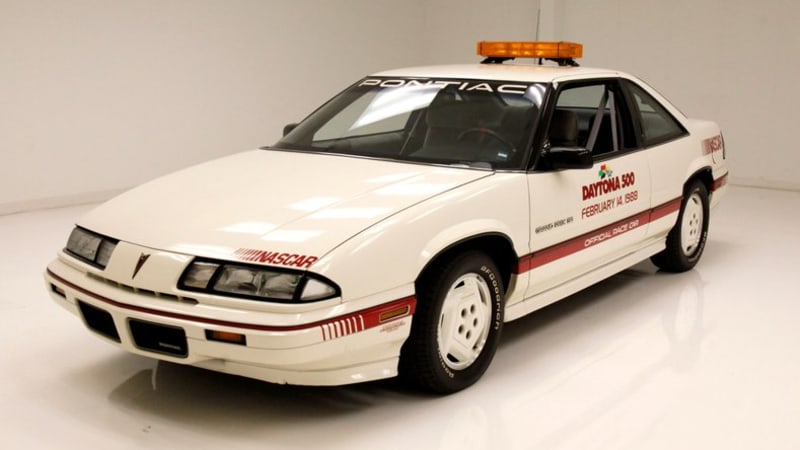This 1988 Pontiac Grand Prix Daytona 500 pace car could be yours

Hopefully, the fans of GM’s W-body ’80s/’90s intermediates can forgive us, but we had pretty much forgotten — or had never really known — that one of the ways that era’s Pontiac Grand Prix bathed itself in glory was by serving as the pace car for the Daytona 500. In fact, the Grand Prix paced NASCAR’s marquee race every year from 1988 to 1992, and again in 1997, 1998, 2000 and 2003.
That first year, 1988, the Grand Prix was all-new, making its debut on the W-body platform. It was also Motor Trend‘s car of the year. The 1988 Daytona 500 marked the 17th year in a row that a Pontiac was chosen to set the pace but the first time a front-wheel-drive car was so honored. The ’88 Grand Prix followed a spate of Pontiac Trans Ams.
This ’88 Grand Prix, for sale right now on eBay Motors, is presented as an actual pace car, although fans could order a complete set of pace car decals for their very own GP. The pace car is based on that year’s top-spec Grand Prix, the SE. In place of the standard car’s 2.8-liter V6, however, the pace car uses a modified 3.1-liter V6, which is hooked to a five-speed manual transmission. This Grand Prix is otherwise largely standard fare excepting the roof-mounted light bar, the switches for which are located next to the radio. The mechanical odometer tucked into the digital instrument cluster shows just over 5,000 miles, and presumably, not all of them were acquired on the high-banked oval.
With four days to go in the auction, bidding sits at $4,000 with the reserve unmet. Although the reserve is unknown, one clue is that this Grand Prix had been listed by a classic-car dealership in Pennsylvania for $18,500.
Besides the debut of the W-body Grand Prix pace car, the 1988 race is also notable for its final lap: Bobby Allison held off his son, Davey Allison, to take the checkered flag, with the father-son duo enjoying a 1-2 finish.
Now, who wants to re-live those Grand Prix glory days? Get on your Pontiac and ride!
.embed-container { position: relative; padding-bottom: 56.25%; height: 0; overflow: hidden; max-width: 100%; } .embed-container iframe, .embed-container object, .embed-container embed { position: absolute; top: 0; left: 0; width: 100%; height: 100%; }
